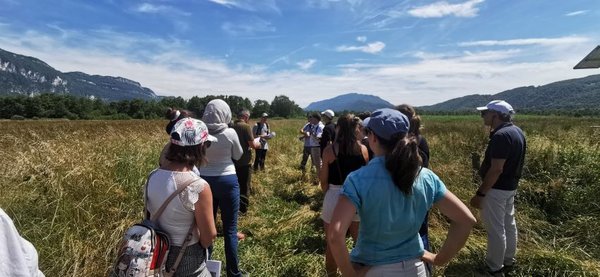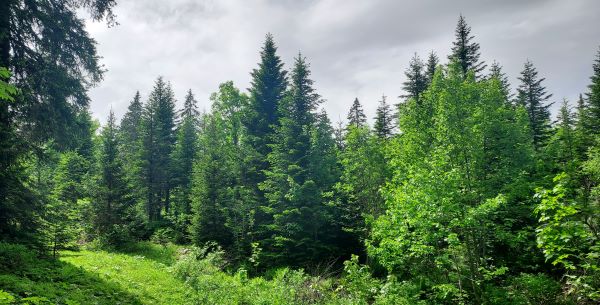2024.07.16
AURA-EE brought together the European partners of the NACAO project to promote carbon storage through nature-based solutions on 18 and 19 June in Aix-les-Bains, France. This was an opportunity to highlight the good practices developed in France, Italy, Poland and Germany. And to organise two site visits to the Bauges Regional Nature Park and Lac du Bourget.
Restoring degraded natural environments
How can the original functionality of the environment be restored? In the case of the Chautagne marshes, in the Chindrieux wetlands, France, and the Borgfelder Wümmewiesen wetlands in Bremen, Germany, the aim is to improve the water retention capacity of the environment - these areas play a crucial role in flood regulation - and to maintain agricultural activity: mowing in the case of Chindrieux, and livestock farming in the case of Bremen. The visit of the Chautagne marshes illustrated the need for cooperation between local players (local authorities, farmers, scientific experts), the success of which is illustrated by the many biodiversity and water management indicators.

For the Guadalete river in Spain, a restoration project has already been in place for several years. What is particularly interesting is the link with the local carbon credit mechanism. Using a soil sampling and analysis system, researchers from the University of Cadiz have estimated the carbon stock in the parcel so that companies can finance the restoration project.
Another type of restoration is the revegetation of schoolyards in the town of Albertville in France. Built with old materials that were not adapted to climate change, the school grounds have been restored with more plants and more suitable furniture. One of the many benefits of the greening is the calmer atmosphere in the school.
Different approaches to forestry
In Italy, a programme of urban micro-forests is being launched to combat poor air quality: 15 hectares will eventually be planted in urban areas, near factories, traffic arteries and brownfield sites. Although initially designed to improve air quality, the new forest areas will also help to increase carbon storage in the area.
In France, in the Bauges Regional Nature Park, some parcels in the town of Les Déserts suffered damage from the 1999 storm and are now managed by maintaining a balance between the trees, particularly in terms of access to light. The aim is to adopt a reasoned approach and drastically limit the use of clear-cuts.
The new Revard cross-country ski centre illustrates one of the forestry sector's destinations, with the building's timber frame. With a capacity of 800 people a day, it is used by schoolchildren, the general public and top-level sportsmen and women.

In Poland, where most of the forest is publicly owned, two forest plantation programmes have been developed. They help to include biodiversity, ensure water retention and increase carbon storage, in particular through the irregular planting of beech trees and the cessation of practices that damage the soil. An associated research institute has estimated that the first programme enabled an additional 1 million tonnes of CO2 to be stored over 30 years.
Finally, the city of Jyväskylä is developing a 2040 programme incorporating a number of transition themes: achieving zero emissions by 2040, low-carbon energy production, zero waste and the circular economy, and the well-being of residents. Approved in 2019 and updated in 2022, more than a quarter of the programme's measures have already been implemented. It should be noted that the city of Jyväskylä recorded a 37% reduction in greenhouse gas emissions between 2005 and 2022.
All these examples illustrate the need for cooperation between the various players in a given area. They were presented at a seminar attended by the European partners (local authorities, elected representatives, scientists and forest managers) of the NACAO project to promote carbon storage through nature-based solutions, held in Aix-les-Bains on 18 and 19 June. The event was organised in collaboration with the Conservatoire des espaces naturels de Savoie, the ONF, Sylv'acctes, Grand Chambéry, Grand Albertville, Grand Annecy, Grand Bourg, the Auvergne-Rhône-Alpes Region and the SAFER.


Imprimer